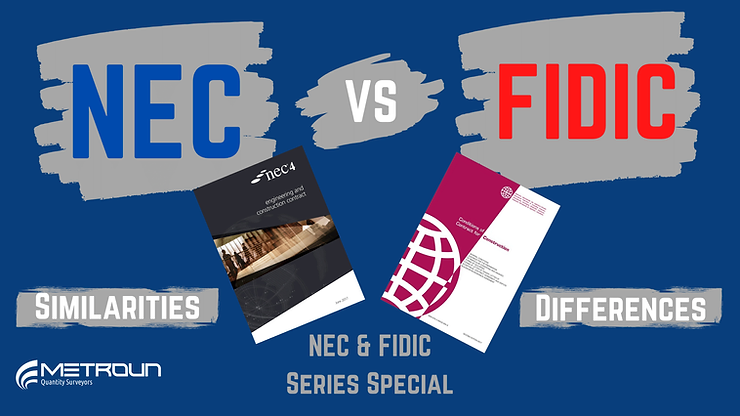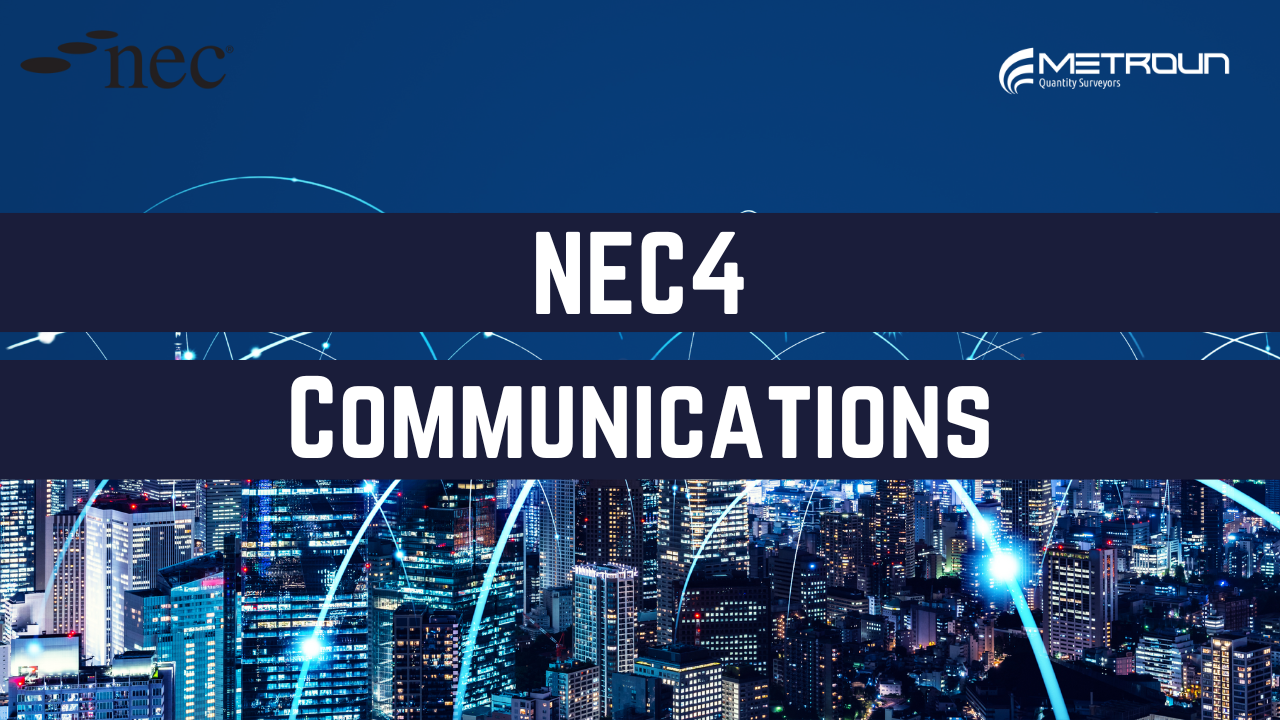Two of the most commonly used international construction contracts are NEC and FIDIC. In this article we are going to compare the two using a report conducted by NEC “A comparison of NEC and FIDIC”.

FIDIC is the French acronym for Fédération Internationale Des Ingénieurs-Conseils. And yes, that was google text to speech, thank you google. In English, this translates to, International Federation of Consulting Engineers. FIDIC was formed on 22nd July 1913 adopting the founding principles of Quality, Integrity, and Sustainability. It was founded by a trio of francophone countries: Belgium, France and Switzerland, hence the French name.
The NEC which stands for New Engineering Contract was formed much more recently with the first edition released in 1993.
The NEC is often considered a more progressive contract, aiming to patch some of the downfalls of prior construction contracts. The FIDIC is often described as a more traditional contract. Each contract appoints a person who acts on behalf of the employer. For the FIDIC contract they are known as the Engineer and under the NEC they are known as the Project Manager. One of the key similarities between FIDIC and NEC is that they are both designed to be used internationally.
So let’s look into how these contracts are administered differently. We are going to split this down into two key areas: time and cost:
Time
Both contracts require the contractor to submit a programme for the works to be undertaken. Both contracts also require the employer to state a Starting Date, Completion Date, Access Dates and any Sectional Completions. However, the NEC requires a much higher level of detail, containing key concepts such as float and time risk allowance. The NEC uses the initial programme as a tool for how variations, earned value management and progress of the project is assessed. FIDIC requires the contractor to submit an initial detailed time programme and to update this when the programme becomes inconsistent with actual progress or contractor’s obligations. This programme is not used in any other provision of FIDIC. Under the NEC it is imperative that there is always an up-to-date accepted programme in place to ensure the contract runs smoothly. A key feature of addressing risk to programme extensions is Early Warnings. Under NEC these are submitted by either the Project Manager or Contractor as soon as one or the other becomes aware of any matter which could affect time, cost or quality of the works. These are usually followed by a risk mitigation meeting where parties will work collaboratively to mitigate risk. A task which would be extremely difficult without an up to date programme.
Cost
Both NEC and FIDIC make provision for the price payable to a contractor to be based on a Bill of Quantities. NEC goes further with pricing methods by providing the options to choose how work is procured. These include cost based open-book contracts such as cost reimbursable, target cost options where the profit and loss is shared between employer and contractor, lump sum & management contracting. Variations under FIDIC are known as “Variations/Claims” and under NEC are known as “Compensation Events”. FIDIC deals with time and cost variations separately, unlike the NEC where both time and cost are grouped together under the Compensation Event. Both contracts have different conditions for what constitutes a variation. However, FIDIC provides a number of subjective tests for determining if events are grounds for recompense to the contractor. NEC on the other hand relies on more objective tests. NEC states the following “An example of this is weather, FIDIC refers to ‘exceptional adverse climatic conditions’, which is subjective, whereas NEC uses a worse than 1 in 10 year approach to weather, which is objective.
Summary
To summarise, FIDIC focuses on liabilities and risk in a more traditional manner, opposed to NEC which requires a more proactive and collaborative approach to managing the contract. It should be noted that during recent time FIDIC has been changing it’s style to become clearer; a feature which is fundamental to the routes of NEC, ensuring text is drafted in plain English ensuring a reduction in nuances and ambiguities. NEC has been attempting to eliminate the use of legal terms where possible in replace of simple English which NEC regards as “giving words their natural meaning”.
Why not watch our video on this topic:









